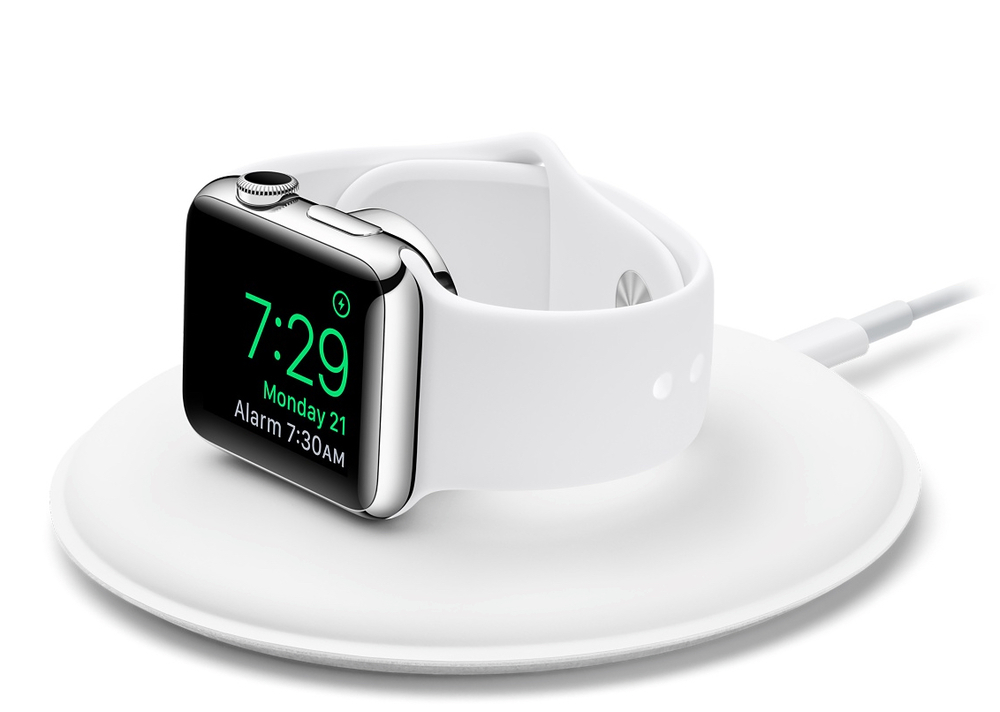Hopefully, Apple has wireless charing plans for its iPhone line in the works. One in four consumers has used wireless charging on a mobile phone and more than eight in 10 has heard of the technology, according to a 2016 consumer survey conducted by IHS Markit.
The IHS Markit Wireless Charging Consumer Insights Report, a survey of consumers in the United States, United Kingdom and China, showed a continued rise in awareness over the past 12 months to 80%, increasing from 76% in 2015 and just 36% in 2014. More importantly, those who have used the technology had an overwhelmingly positive reaction: over 98% would choose the feature again.
This steady growth in awareness and adoption of wireless charging began in 2015, with the inclusion of the technology into Samsung’s flagship Galaxy smartphones, the Apple Watch — via the Magnetic Charging Dock (pictured) — and other popular mobile devices. Following this surge of mainstream device manufacturers integrating wireless charging receivers into their devices, the receiver market grew more than 160% in 2015 over the previous year, and annual global shipments reached 144 million units.

“Awareness is the first step in creating demand, and more products from mainstream manufacturers will need to be made widely available to keep the momentum going,” says Vicky Yussuff, wireless power analyst for IHS Markit. “In fact, Apple is expected to release a wireless-charging-enabled iPhone in the next 18 months. This would mean both of the top two key players in the smartphone market would be on board, no doubt pushing consumer awareness closer to the 100 percent mark.”
While awareness is high, it is usage that translates into industry profits. In last year’s survey, only 20% of consumers had actually used wireless charging technology, and that has risen to 25% in 2016. This modest increase reflects the low volume of new product launches that took place this year. According to previously released IHS information, 10% of smartphones shipped in 2016 will be capable of wireless charging. However, despite the delays so far in getting new products to market, customer retention still remains high.

“Nearly all consumers, who have used wireless charging, said they want the capability for their next mobile devices, which illustrates that the solutions available today are already meeting customer needs and expectations,” says Yussuff.
Demand for faster wireless charging is growing, and wireless-power suppliers are already working on higher-power solutions. For example, the Samsung Galaxy S7 can be charged up to eight watts (compared to five watts for most other solutions). “If faster wireless charging can be achieved, the need for longer battery life would decline, as users would be able to quickly top up their battery at various points throughout the day,” Yussuff said. “However, it appears consumers already use wireless charging in a different way than they use wired-power alternatives. One key difference is the use of public charging infrastructure, to allow consumers to wirelessly charge their devices’ batteries away from the home or office.”
Eliminate unwanted people or things from your photos with Snapheal CK
